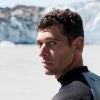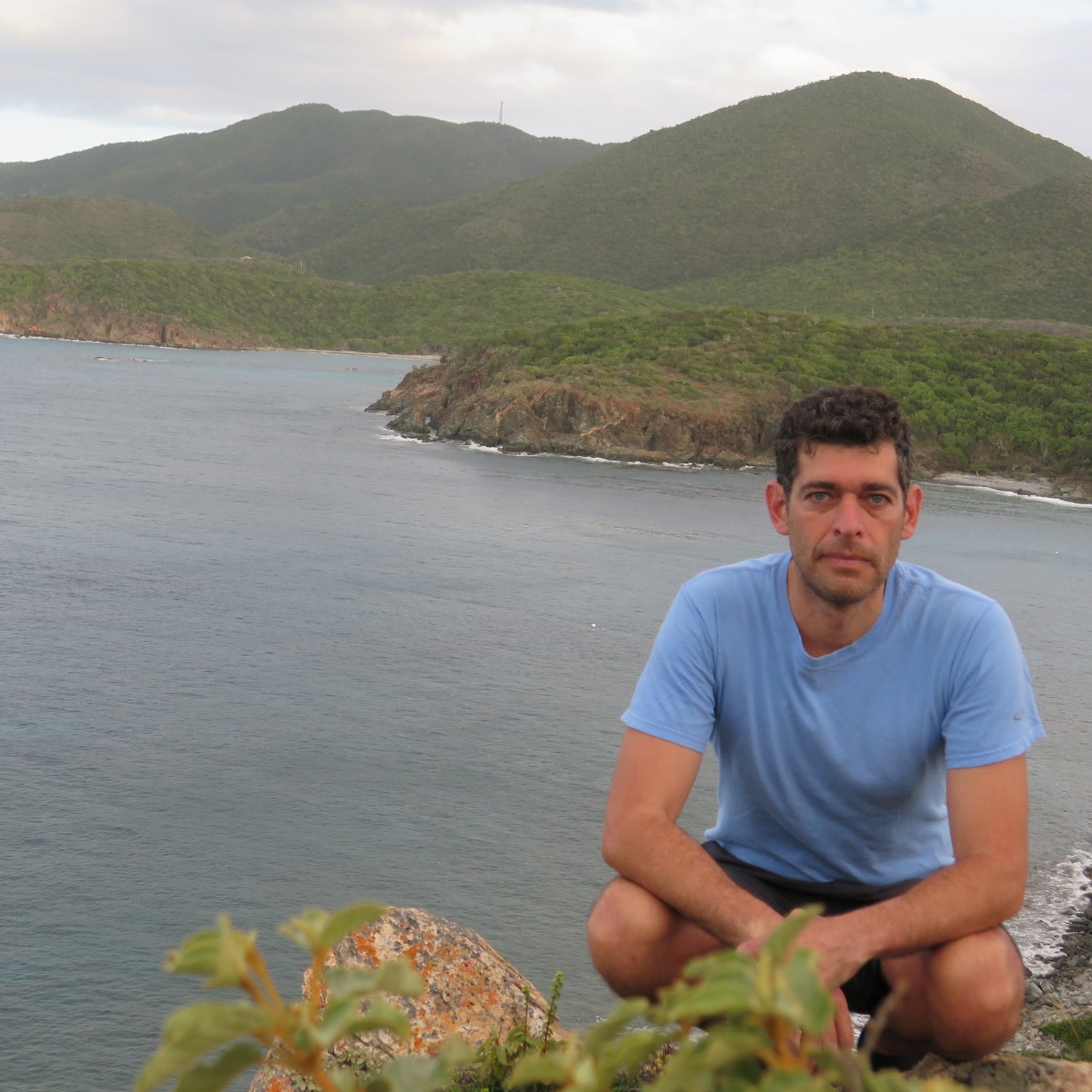St. John is the jewel of the Caribbean. While most of the other Virgin Islands were corrupted long ago, has preserved St. John’s integrity: 7,259 acres above sea level and 5,650 below, 26 miles of hiking trails, and 30 beaches Photoshopped by God. Alas, this is hardly a secret. With no remote camping allowed, and fleets of taxis delivering day-trippers to the same famous north-shore spots, the beaches can get downright bougie.
Yet the charts show scads of remote coves accessible only by long hike, dubious jeep trail, or water. Scheming from the deck of my eco-tent on a December morn, I came up with a plan: What better way to gather intel than by circumnavigating the island by sail, then revisiting the gems with a paddleboard and a towel?
My visions of a solo journey were scuttled when I proposed to the watersports kiosk at Cinnamon Bay Campground that they hand over a Hobie Cat so I could round the island in one spectacular day of derring-do. Savannah, the tanned girl in the booth, was a veteran at deflating the egos of middle-aged, sunburned men. “We don’t let the boats go beyond the safety area,” she said. Besides, she pointed out, it would be impossible on such a short December day—she’d tried. Something wistful flickered across her face.
I thought fast. It was a slow day at Cinnamon Bay, I pointed out. She agreed. A beautiful day, I added.
A waiver form and $500 later, I was captain of the 14-foot Hobie Cat Rockefeller, which I’d temporarily christened for Laurence R., the man who scooped up half the island in the early fifties, built a five-star resort, and donated the rest to the U.S. government, which created the park in 1956. Savannah and I raced the Rockefeller out of Cinnamon Bay and into the trade winds that howl nonstop from the east all winter long.
The good news: the winds were honking so hard that a one-day circumnavigation was not absurd. The bad news: the winds were honking. We skittered past 40-foot catamarans like a 14-foot water strider. We were stripped down and built for speed: snorkel gear, water bottle, granola bars, and a GoPro, plus a second, smaller sail in case things got gnarly. Savannah steered with her toes.
By midday the winds had grown so strong that we ducked behind Waterlemon Cay to change sails. St. John’s north shore is protected from the open ocean by the British Virgin Islands, but its south shore is exposed, and we knew the wind and waves would be huge.
We needed every minute of daylight—but there were turtles and moray eels to snorkel with. And we had to hike up to the ruins of an 18th-century sugar plantation so Savannah could do headstands in the archways. She used to be a gymnast. Three years ago, for her 18th birthday, she got herself a koi tattoo and moved to St. John.
We swung around the jagged spire of Ram Head, which marks the island’s southeast corner, a couple of hours behind optimal and turned downwind in the open sea. Ten-foot terrors burst through the trampoline in a crash of foam. Every wave tried to surf us down into a trough, where we stood a good chance of pitchpoling, so for the next three hours we perched on the very back of the pontoons to keep the nose high, spilling wind from the sails to slow ourselves down. Our ship was basically two pieces of flotsam lashed together with a sail and a rudder, and I began to understand how the ancient Polynesians got around. When the seas are warm, you can be in them as much as on them.
Spectacular deserted bays and 200-foot-high cliffs slipped by to our right, white spray exploding up their faces. A helicopter came cruising low, perhaps to check on our sanity. Savannah flashed it a peace sign and it sped off.
In the coming days, I would revisit those deserted south-shore beaches with a Badfish Hole Shot—an inflatable paddleboard. Empty sand, deserted islets, and nonjaded fish were all mine.
But for now we’d lost the light. The last two hours we sailed in darkness; I peered ahead for the flash of warning buoys and strained my ears for the sound of reefs. Our twin rudders trailed phosphorescent sparks. At last we turned back into Cinnamon Bay, 11 hours after we’d left. As we dragged the Rockefeller up the beach, we left glowing footprints in the wet sand. They glittered for a moment, and then they, and the day, were gone.
Access + Resources
When: April to June, to avoid peak-season tourists and higher prices.
How: Fly to St. Thomas and ($7) to St. John.
Play: You can rent Hobie Cats at the (from $70). rents sea kayaks and paddleboards and runs excursions.
Stay: has jaw-dropping views at the edge of the wildest section of coast (from $135).
Eat: Celebrate your return to civilization with a plate of curried goat and a soursop punch at in Cruz Bay.



